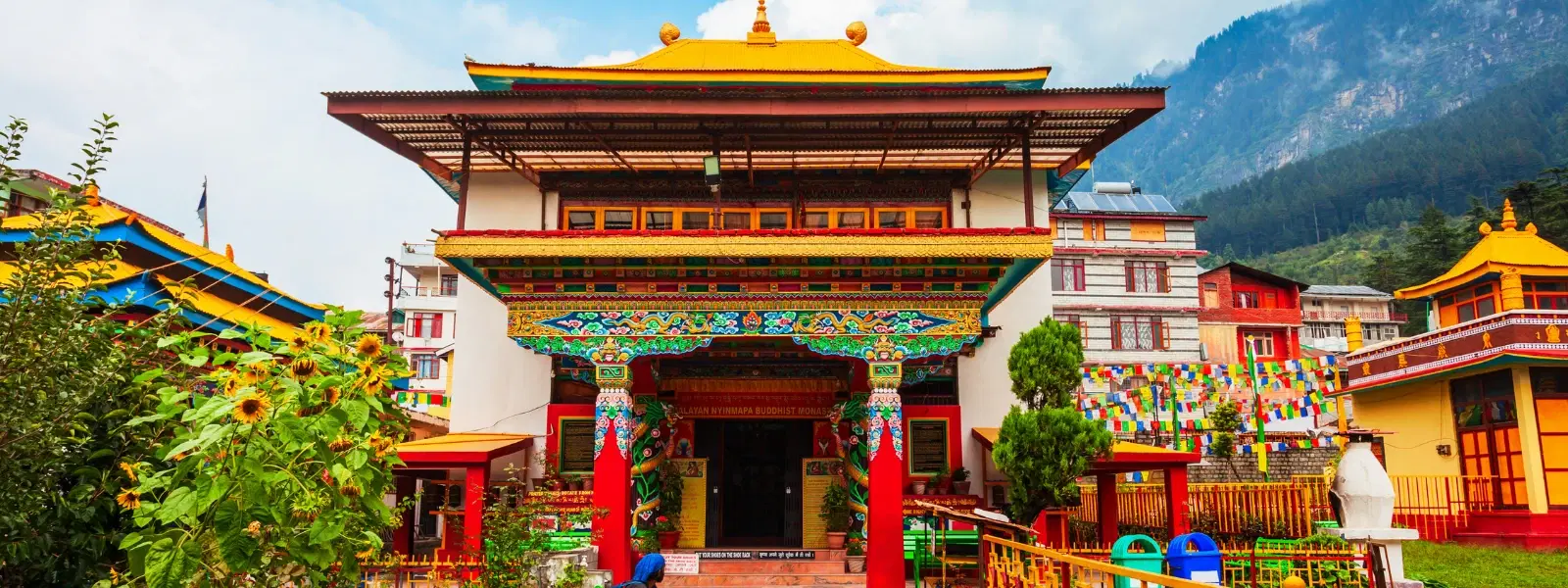
Hotels
•04 min read

The vibrant bursts of color, rhythmic chanting, and the echo of ancient drums set the stage at the Hemis Festival in Ladakh. Nestled against a backdrop of rugged mountains, the festival offers a rare glimpse into a spiritual celebration that has preserved Buddhist traditions for centuries.
Celebrated at the iconic Hemis Monastery, the Hemis Festival is a cornerstone of Ladakh's Buddhist culture. Rooted deeply in Tibetan Buddhism, it not only marks religious milestones but also reinforces the importance of community, art, and spiritual healing. In this blog, you will discover the historical origins, intricate rituals, and breathtaking performances that make this festival a must-see for anyone desiring a spiritual and cultural journey.
The festival traces back to the legacy of Guru Padmasambhava, a revered figure in tantric Buddhism. His teachings and the triumph of good over evil are celebrated through age-old rituals that continue to enchant devotees and visitors alike. Hemis Festival is not only an homage to ancient traditions but also serves as a vivid reminder of how mythology and history intertwine to shape the beliefs of the people.
Hemis Monastery, or Hemis Gompa, stands as a spiritual beacon in Ladakh. With its intricate architectural details and serene ambiance, this monastery has been a center for Buddhist learning and meditation. Its deep ties with Tibetan Buddhism are evident in its many ritualistic celebrations and the way it anchors the local community's cultural identity.
At the core of the festival lies a series of sacred rituals that include soulful prayers, offerings to deities, and the ceremonial unveiling of a giant thangka. This religious painting tells profound stories from Buddhist philosophy. Each ritual is a meditative practice that binds the community and reaffirms their connection to nature and higher wisdom.
The Cham dance is undoubtedly one of the festival's highlights. Monks, adorned in lavish costumes and mystical masks, perform this dance to the beat of ancient drums. Each move is steeped in symbolism, representing core Buddhist principles and the eternal struggle between light and darkness.
Did you know? The Cham dance is not just a performance but a meditative practice for the monks, symbolizing the triumph of wisdom over ignorance.

The festival bursts with vibrant cultural expressions—from traditional music and elaborate costumes to a showcase of local crafts. These cultural displays unite ancestral Ladakhi traditions with contemporary community celebrations, creating an immersive experience that honors generations of heritage.
No cultural festival is complete without its culinary delights. At Hemis, visitors savor traditional Ladakhi dishes like butter tea and hearty barley-based meals. Market stalls brim with local handicrafts, unique souvenirs, and tantalizing delicacies that invite exploration and conversation, enriching the festive spirit.
The Hemis Festival generally takes place in June or July, aligning with the Tibetan lunar calendar. Reaching the Hemis Monastery requires some planning—travelers should prepare for the rugged terrain. Weather conditions might change rapidly, so packing appropriate clothing is essential. For those wishing to experience the festival fully, a stay in a local guesthouse offers an authentic experience without straying too far from the action.
Visitors will find that navigating the festival grounds is easier than it seems. Seek out the best vantage points to watch the Cham dance, and take time to explore the ritual sites where the intricate ceremonies unfold. After the celebrations, consider extending your journey with a visit to nearby attractions like Hemis National Park or other revered monasteries in the region.
Tibetan Buddhism plays a pivotal role in shaping the spiritual and cultural identity of Ladakh. Festivals like the Hemis Tsechu have been instrumental in preserving ancient practices and teachings. These celebrations are a living tapestry that reinforces the significance of Buddhist rituals in setting community values and fostering inner peace.

Attending the Hemis Festival is much more than witnessing a cultural event—it is a journey of personal transformation. The combination of sacred rituals, the dynamic Cham dance, and the warmth of communal celebrations offers an experience that transcends simple tourism. It is a soulful dive into the rich Buddhist heritage of Ladakh, leaving visitors with memories that resonate long after they leave the mountain trails.
Ladakh's Buddhist culture is deeply rooted in Tibetan Buddhism, characterized by monasteries, rituals, festivals, and a way of life centered around spirituality and harmony with nature.
The Hemis Festival celebrates Guru Padmasambhava, the founder of tantric Buddhism, and his victory over evil forces. It is marked by sacred rituals and the Cham dance.
The festival symbolizes the triumph of good over evil, promotes Buddhist teachings, and serves as a vibrant display of Ladakh's cultural and spiritual heritage.
The festival honors Guru Padmasambhava and his contributions to spreading Buddhism in the Himalayan region. It is also a time for the community to come together and celebrate their shared traditions.
The festival is usually celebrated in June or July, depending on the Tibetan lunar calendar.
The Hemis Festival is more than just a celebration; it reflects the very soul of Ladakh's Buddhist culture and spiritual traditions. With its mesmerizing Cham dance, sacred rituals, and vibrant cultural displays, the festival offers an immersive glimpse into a rich heritage that continues to thrive. For anyone eager to embark on a journey of cultural discovery and spiritual awakening, the Hemis Festival stands as a timeless destination where history, art, and community converge.